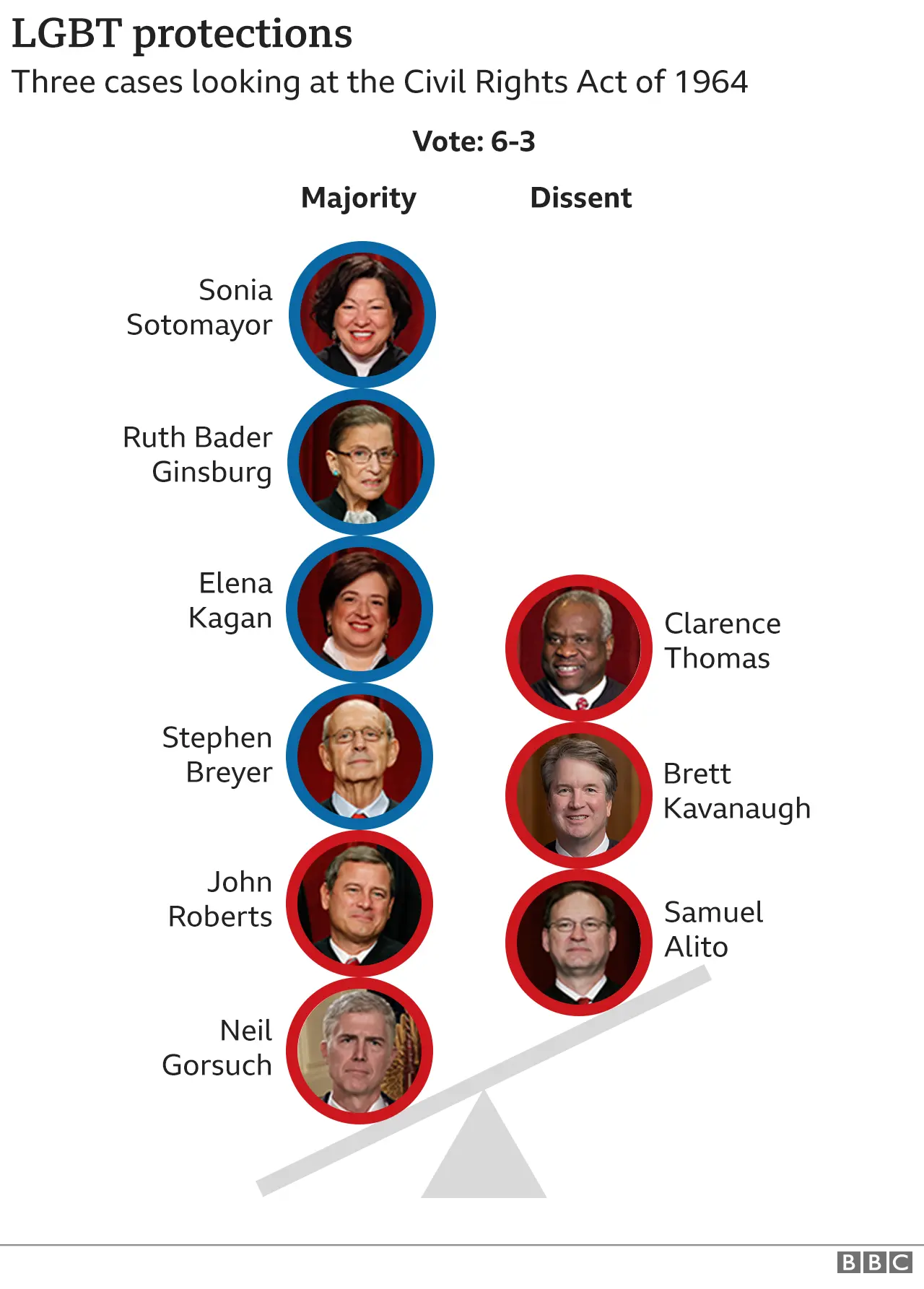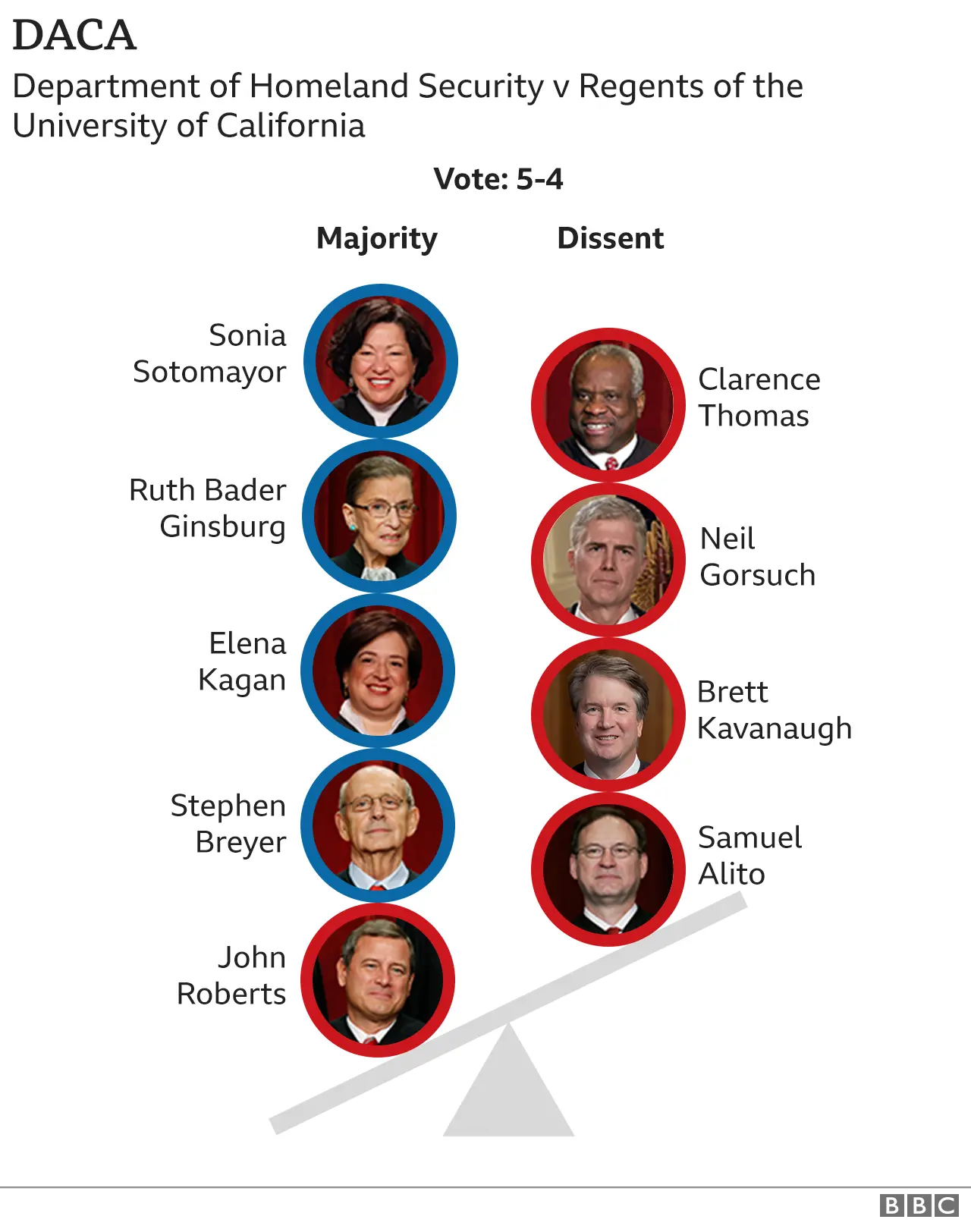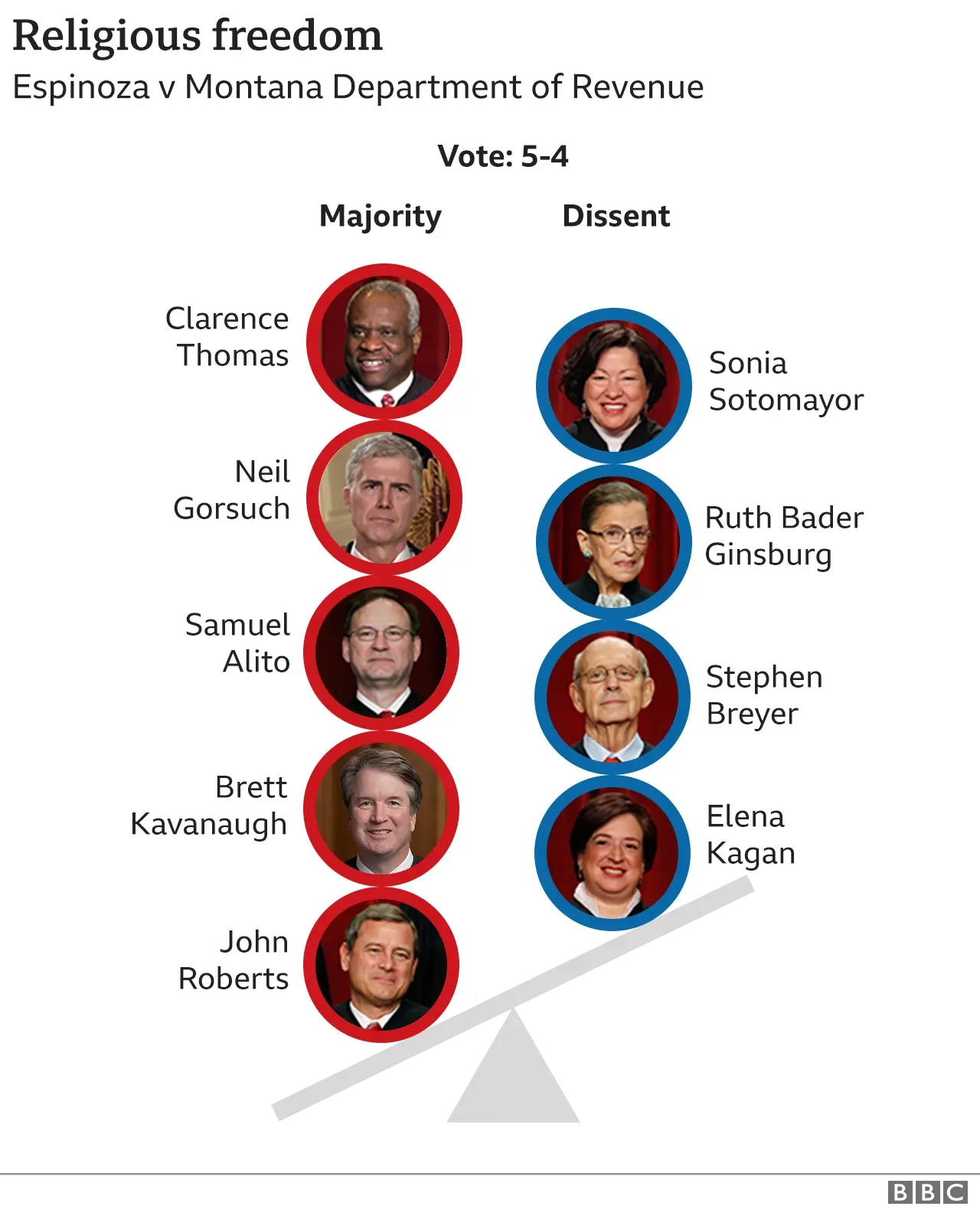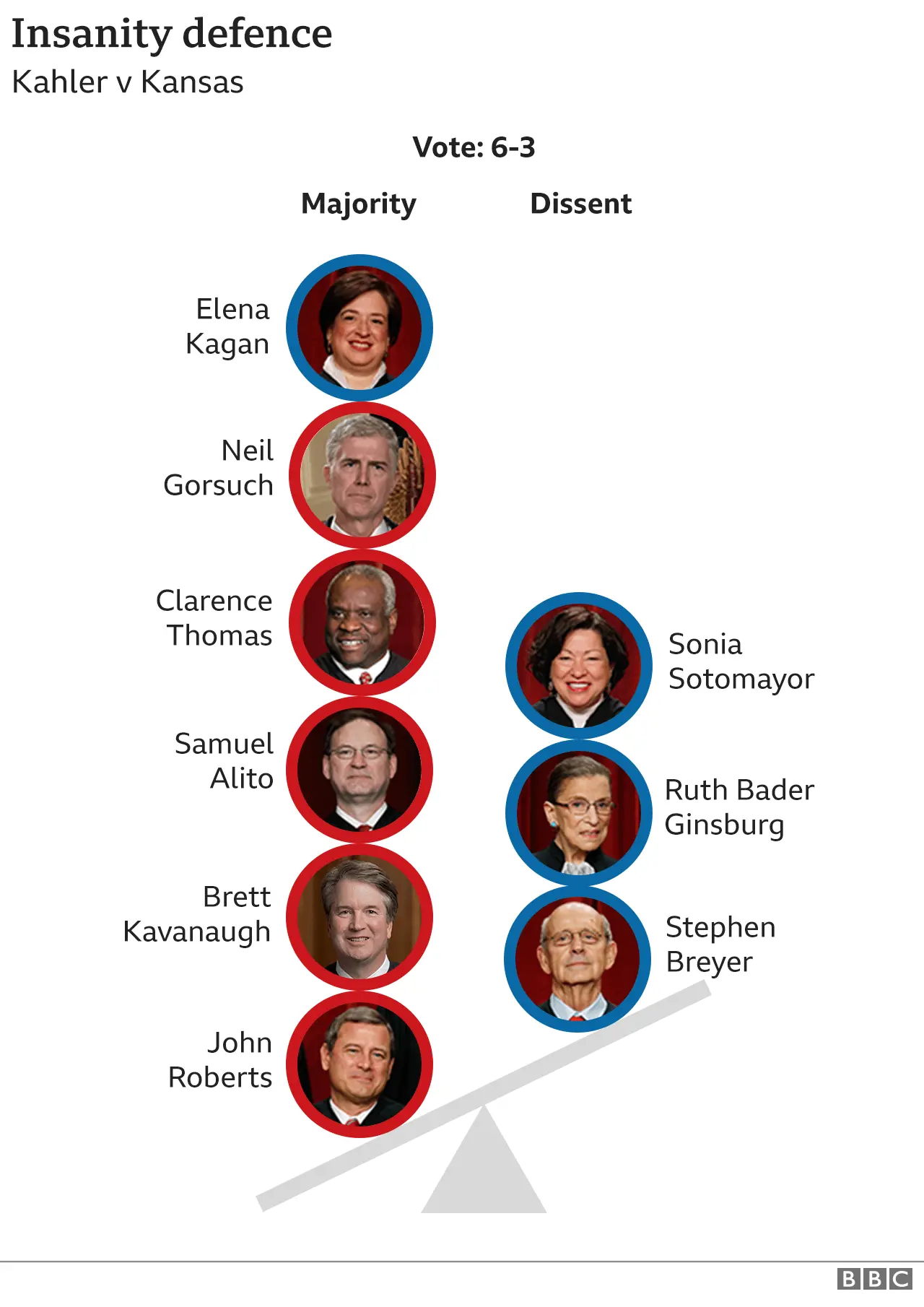Ruth Bader Ginsburg death: How has Trump's Supreme Court changed America?
 BBC
BBC
The US Supreme Court reshaped under President Donald Trump has been called the most conservative-leaning court in modern US history.
Now the death of liberal judge Ruth Bader Ginsburg means it could further tilt towards conservatives if the Republican Party is able to replace her in the months ahead.
With two appointments already in the president's first term, the bench's ideological balance already tilted right, favouring conservatives in a 5-4 split.
The top court in the US has a profound impact on American life, ruling on highly contentious issues like abortion and gun rights.
Nine judges on its bench, called justices, get lifetime terms so when President Trump got to pick two - Neil Gorsuch and Brett Kavanaugh - there was huge expectation to see the impact this would have.
We look back at five closely watched cases this year to see if this conservative-leaning court actually voted that way.
Analysis by the BBC's Anthony Zurcher, North America reporter
Abortion
In June, the court said that a Louisiana law requiring doctors performing abortions to have admitting privileges at nearby hospitals - effectively limiting the number of abortion providers in the state - was unconstitutional. The ruling, in which Justice Roberts sided with the court's liberal quartet, was seen as a major victory for progressives and pro-choice advocates. The future of reproductive rights in the US had been garnered intense focus since Justice Kavanuagh's nomination in 2018. With a conservative majority secured, many feared previous cases protecting a woman's right to choose, namely Roe v Wade, would be overturned.


Analysis
Anti-abortion activists were hoping this case would provide proof that a majority of the court was ready to start rolling back abortion protections with the ultimate goal of allowing states to entirely ban the procedure. Instead, it demonstrated that Roberts, who sided with the four liberals, was more interested in respecting the precedent set by a recent case with similar facts than quickly steering the court in a more conservative direction.
LGBT rights
Looking at three different cases, the court decided that the Civil Rights Act of 1964 protects gay and transgender employees from workplace discrimination. Justice Roberts and Justice Gorsuch joined the court's progressives in arguing that Title VII of the act, which bars discrimination against sex, applies to claims of sexual orientation and gender identity. The 6-3 ruling is a resolute victory for progressives and marks the biggest moment for LGBT rights in the US since the court legalised same-sex marriage nationwide in 2015.


Analysis
This will probably be seen as the big surprise of this court term, given that conservatives Roberts and Gorsuch sided voted with the liberals to expand federal employment protections to gay and transgender individuals. It's yet further evidence of how fast and how far views in American society, including the courts, have come on the issue of gay rights.
Daca
In Department of Homeland Security v Regents of the University of California, the nine justices examined an Obama-era policy that shields hundreds of thousands of undocumented young people - known as Dreamers - from deportation, and gives them work and study permits. Somewhat unexpectedly, the court ruled that the administration's attempts to shut down the programme were "arbitrary and capricious" in a way prohibited by federal law. Once again, Justice Roberts joined the liberal judges to deliver a win for liberals.


Analysis
This case had all the makings of political dynamite, with the possibility that hundreds of thousands of US residents could face the prospect of deportation if their temporary immigration protection was stripped away. Instead, Roberts once again proved to be a stickler for proper procedure, ruling that while the Trump administration may have had the power to do something - in this case, rescind DACA - they botched the process so badly they'd have to start over from the beginning.
Religious freedom
Last month, the court ruled that states must allow religious schools to participate in state scholarship programs funded by tax credits. The case, Espinoza v Montana Department of Revenue, centred on a 2015 Montana law - later struck down by the state supreme court - that allowed public funds for scholarships to help families send their children to private schools, most of which were religious schools. The 5-4 ruling, which fell neatly within ideological lines, may open the door to further public funding of religious institutions, marking a victory for conservatives and the Trump administration. Critics say it may divert funds from public schools, in favour of private or religious schools.


Analysis
The court had a number of cases dealing with issues of religious freedom and church/state separation this term. While decisions involving contraceptive coverage and employment discrimination in religious institutions garnered the headlines, they turned on details of the laws in question. No case more clearly exposed the durability of the conservative majority in this area than the ruling in Montana v. Epsinoza, where five justices held that the US constitution itself required government programmes to be made equally accessible to secular and religious schools.
Insanity defence
The Supreme Court ruled in March that states are free to abandon the insanity defence in cases where defendants argue they could not distinguish between right and wrong. In an unusual move, liberal Justice Elena Kagan joined the five conservative justices in her decision. The 6-member majority ruled that a 1995 Kansas law eliminating the insanity defence did not violate the US constitution. In this state, mental capacity may only be considered in the sentencing phase of trial. To date, Kansas is one of just five states to effectively eliminate the insanity defence. This ruling may encourage others to follow suit.


Analysis
The use of insanity as a defence from criminal culpability has been around longer than the United States itself. This term, however, Elena Kagan broke with the liberal justices to write an opinion joined by the five conservatives allowing states to significantly curtail its use in criminal trials. It's a notable ruling, given that criminal procedure is one area where even some conservatives justices have been divided recently, as the court tries to balance the powers of law enforcement and the criminal courts with defendant rights.
